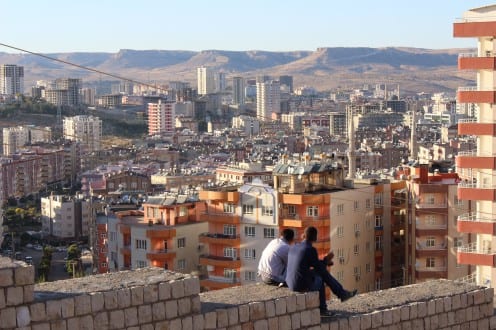
(image, courtesy of davitydave, Creative Commons)
Doing what is essentially two simultaneous ethnographies is no simple task (‘Simple’ as in ‘straightforward’, not ‘easy’. Conducting ethnography is generally not easy, but analysing the ‘online’ component can be mistaken for being easy. In the last two weeks, doing ethnography entailed sitting on Facebook for a few hours a day, staring at hundreds of posts and actually calling it work). Now that we have all done a considerable amount of fieldwork and have met quite a few people, we will all also be spending more time on Facebook (or QQ, or QZone) looking at streams of what people post. For us, debates and differentiation between ‘offline’ and ‘online’ are becoming increasingly irrelevant, as each area gives us more information and provides more insight and depth of understanding to the societies we are studying. Looking at posts on Facebook involves a mix of images, text, acknowledgements in the form of comments, tags and likes and sharing of content made and modified by others in links to other material, memes and videos. We aren’t just analysing images taken and posted by individuals, we are also analysing shared and mixed content. Just photos, for example, would be more straightforward: photos are inherently reflexive, they are taken by someone of something, and they are a way of pointing out, describing and judging, yet; the image-maker is also visibly absent from what they have captured.
So who is all this content for? A general public, groups of publics, or certain individuals? A brief review of other studies on visual practices, photo-sharing and circulation included a study from 2011 by Lindtner et al. on how the sharing of digital media is not just about the exchange, but about social and cultural production, maintaining social ties and identity production. They interrogate the idea of ‘publics’ by drawing on the work of Warner (2001, 2002), which distinguishes between a single public and several publics. Media sharing is aimed towards specific publics, for example, when friends see what other friends have posted there is a sense that ‘this is aimed for me to see’, despite their actual relationship (if any) to the individual (Lindtner, 2011: 5.3). An individual could have several of their networks on Facebook and so each network or ‘digital public’ in this sense is also part of the individual’s impression management (in Goffman’s sense). Aspects of the individual that are being shown through what they post are for specific people in those networks to understand the reference and not others. Some posts I came across that exemplify this are status updates like ‘DON’T LIKE ME?? Have a seat with the rest of bitches waiting for me to give a F#@k’ and ‘I hate how after an argument I think about more clever shit I could of said’ and ‘The most amazing things happen when you really slow down and look at all the wonders around you and you realize God truly does have a plan.’ A quick look at the likes and comments, especially by those informants I’ve met, says that these are distinct messages to people where close friends know the context.
A discussion with the other researchers on the project leads us to think that aspects of managing publics will be common and others will be comparative. By looking at the content of shared images, posts and updates, we can start to gauge what MacDougall describes as ‘the range of culturally inflected relationships enmeshed and encoded in the visual’ (2005: 221). So there will be a lot of time procrastinating, I mean, working on Facebook in the months ahead.
References
Lindtner, Silvia, et al. “Towards a framework of publics: Re-encountering media sharing and its user.” ACM Transactions on Computer-Human Interaction (TOCHI) 18.2 (2011): 5.
MacDougall, David. The corporeal image: Film, ethnography, and the senses. Princeton University Press, 2005
Filed under Anthropology, Methodology, Trinidad
Tags: anthropology, Digital, ethnography, Facebook, fieldwork, Friends, friendship, media, Online, public, research, research method, SNS, social media, social networking, Trinidad
1 Comment »

 Close
Close













